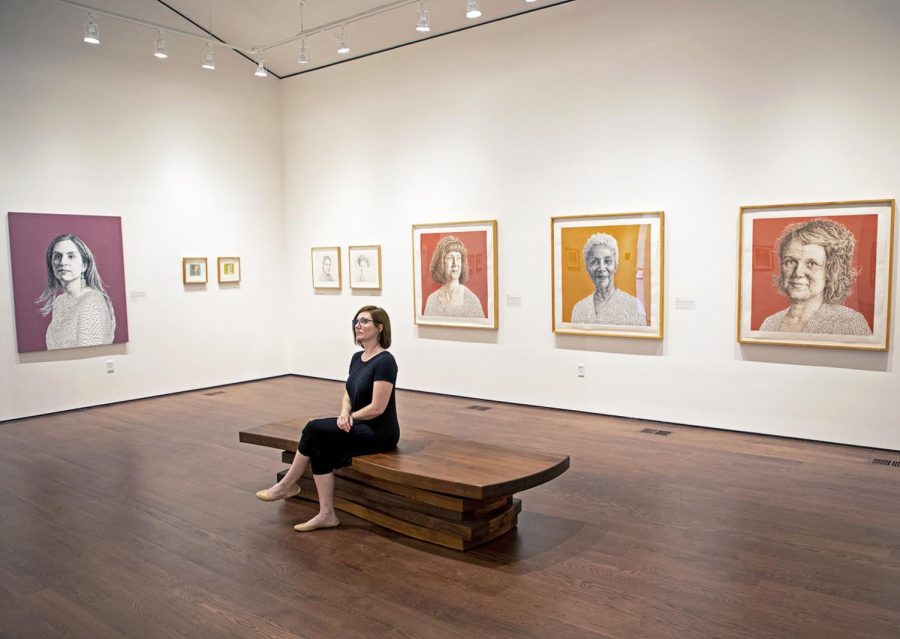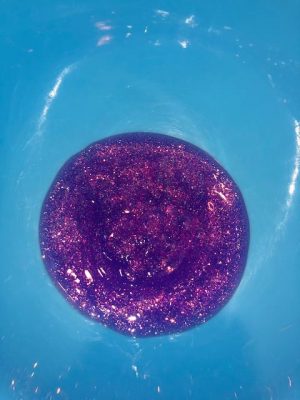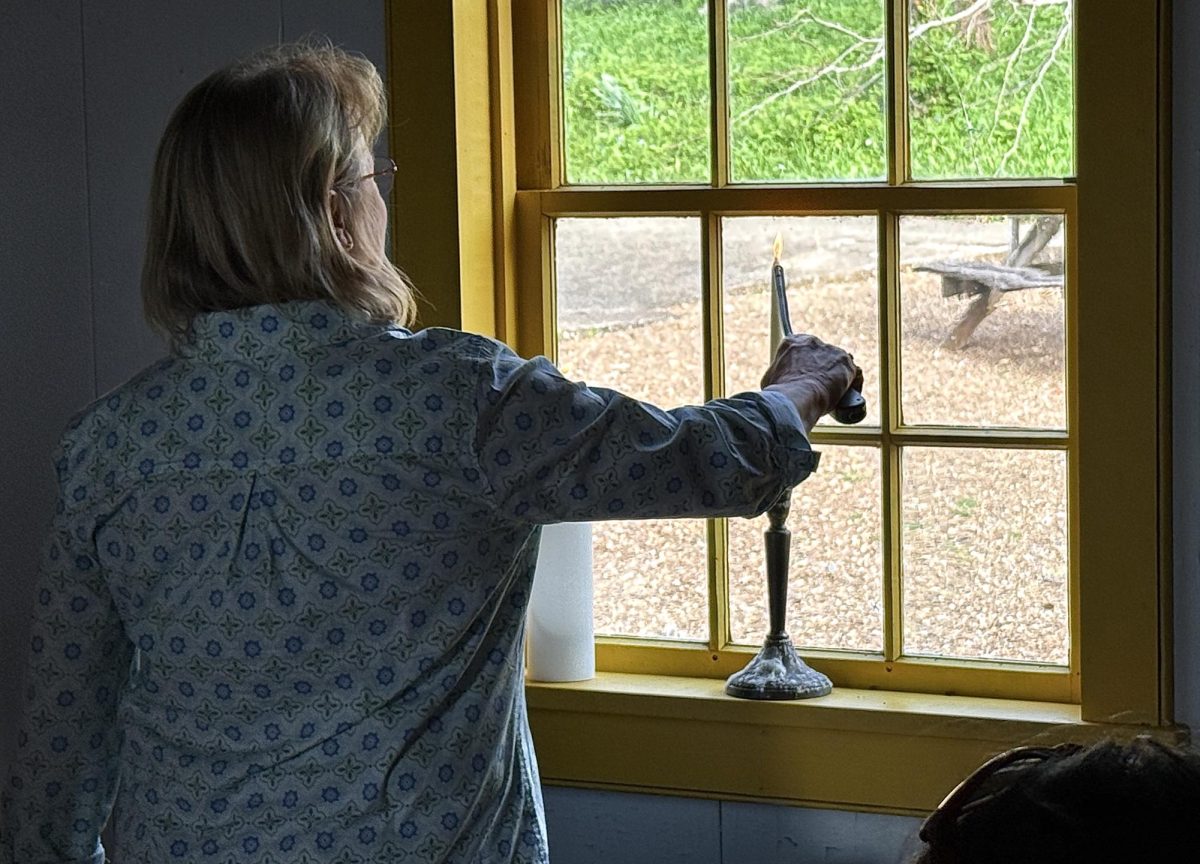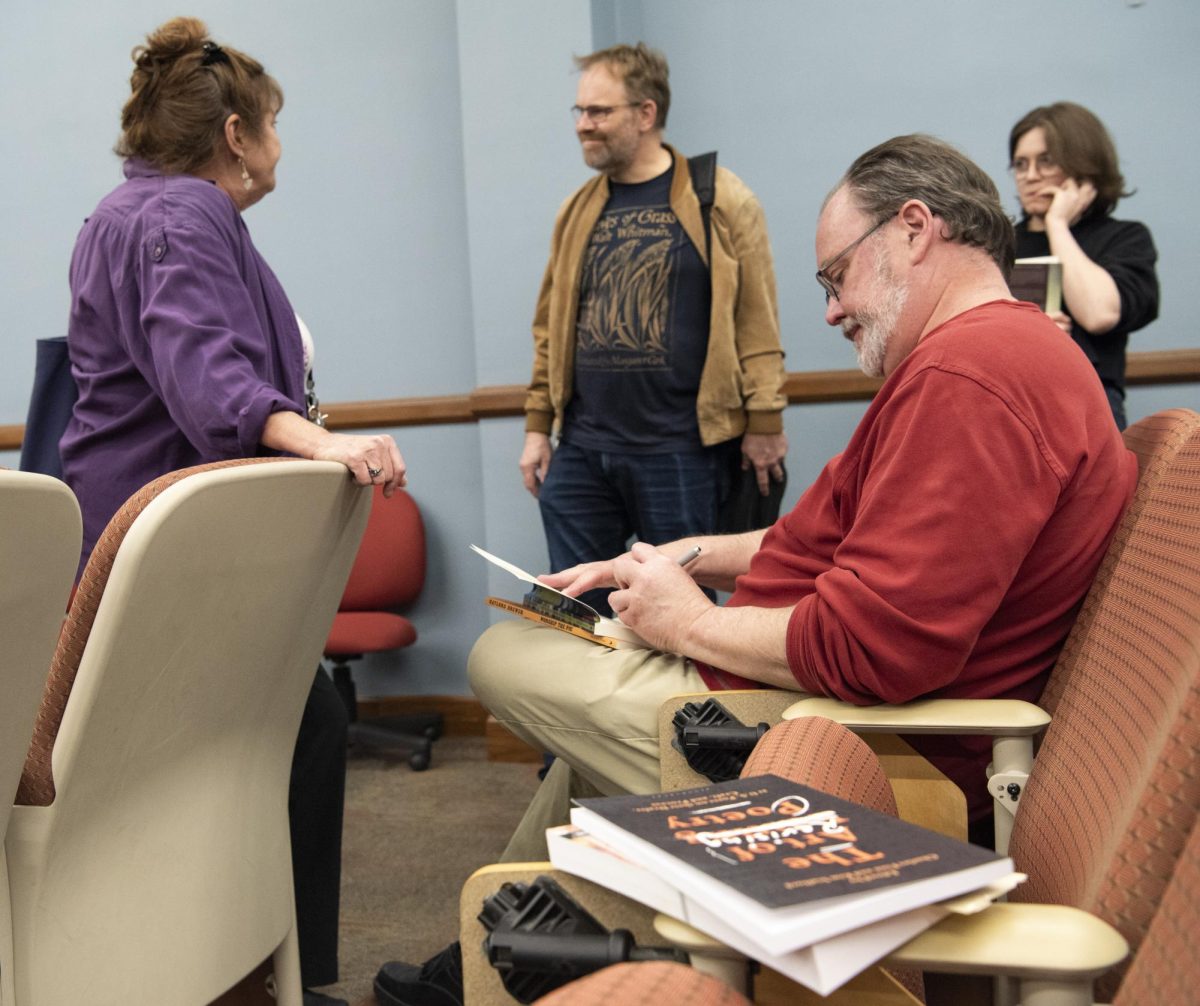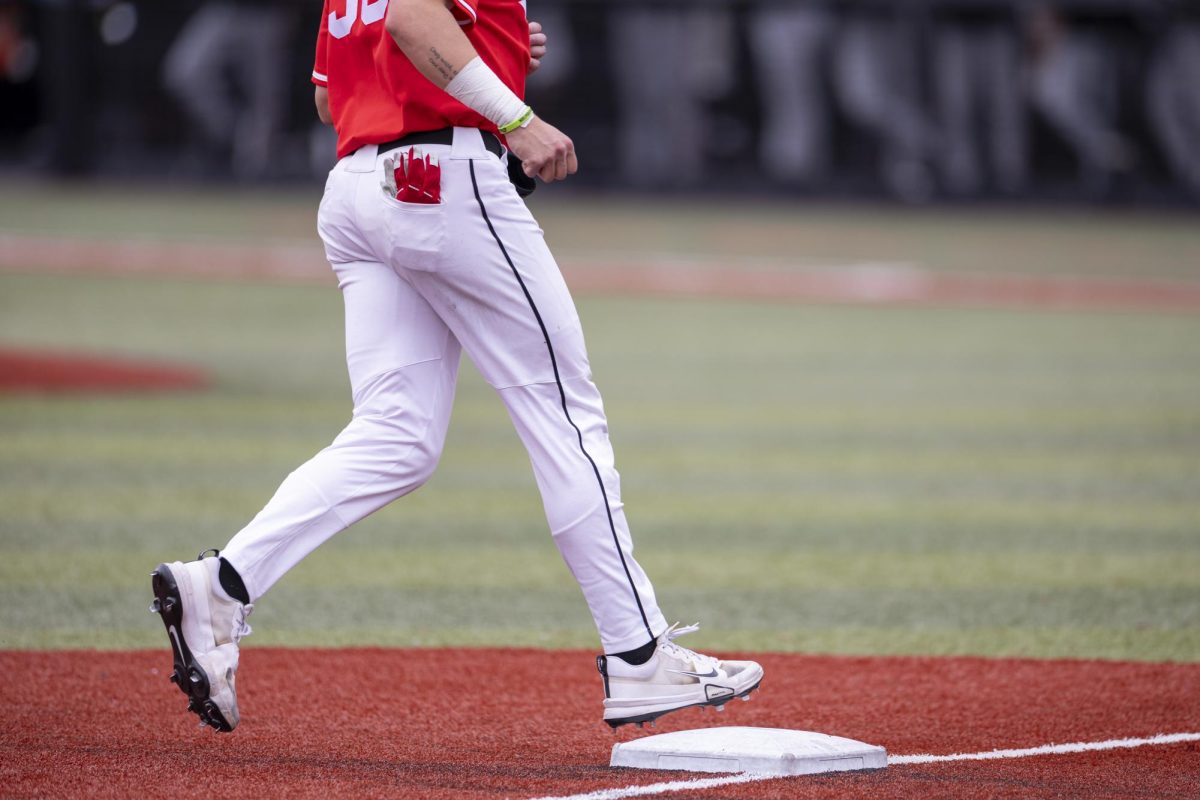Artist makes portraits of local iconic women
September 3, 2018
Brightly colored canvases pop from behind the lightly colored portraits of women hanging in the Downing Museum. Upon closer inspection, words start to appear within the faces and features of the subjects.
“The small typewritten portraits and the large-scale portraits, created with stamps, ink and paint, depict women of South-Central Kentucky who are passionate about different issues and work to make our community a better place,” artist Leslie Nichols said of the exhibit. “Each portrait is created with the woman’s own words from an interview as well as words that relate to her history or the community work she does.”
Nichols fell in love with typewriters and began using them in 2004.
“I was delighted to learn people have been creating images with manual typewriters since the late 1800s,” Nichols said. “My typewritten images started as concrete poems and silhouettes filled with text.”
Eventually, the typewriter became her primary medium and led to her current work incorporating historic texts and first-person interviews into portraiture.
Nichols has been working on the series for two and a half years. She began the project after receiving an Artist Enrichment Grant, beginning with award-winning artist Teresa Christmas.
The exhibit aims to bring attention to the many important women in Bowling Green that advocate for change and social justice, Nichols said.
Nichols has made portraits of women including Leyda Becker, who works with Bowling Green’s international community; Michelle Howell, a WKU alumna who educates young people about healthy foods and works to make those foods accessible; and Patti Minter, a history professor and Democratic nominee for the Kentucky House of Representatives.
According to Jack LeSieur, director at the Downing Museum, the exhibit has been fantastic to work with and has truly lended itself to programming.
“One of my favorite things as a museum director is to experience the relationship between art and the community,” LeSieur said. “Leslie has so wonderfully created a body of work that is not only beautiful, imaginative, and artistically distinguished, but which also carries the inherent power of community engagement. By experiencing the accomplishments of these women in such a creative way, one cannot help but feel a sense of empowerment.”
Empowerment is exactly what Patti Minter found in her experience with the exhibit.
Minter began working with Nichols two years ago, and said she hopes students who see the exhibit will draw inspiration from the words and images used.
“The exhibit Leslie has produced is a powerful artistic statement and a powerful celebration of women who work for social justice in our community,” Minter said. “To use our own words to create our images is a powerful expression of the work that we do.”
Minter added that seeing herself and her own words up alongside other people she admires has been one of the most extraordinary experiences for her.
“I hope that students who see my image, in my own words, will find their own inspiration and power in them, and then take that with them into their own communities to work for justice for all in their own voices,” Minter said.
Nichols echoed the sentiment, saying she hopes viewers will draw ingenuity from the women in their community, hoping it will spark others to create their own changes.
“I hope people are inspired to be the women in the exhibit and see value in working to create positive social change in our community,” Nichols said.
For more information on Nichols and her work, or to get more information about the open studio event she is hosting the first weekend in November, she can be reached at www.LeslieNichols.com.
Features reporter Julie Sisler can be reached at 270-745-6291 and julie.sisler389@topper.wku.edu. Follow Julie on social media at @julie_sisler.

